I’d not been to Bradford since before the first lockdown and I felt as if it was time to spread my wings a little more. For the previous few days I’d been exploring new territory – first a presentation in Mirfield which I’d never been to before. It was given by Emma Decent whose online creative writing classes I’d been attending during lockdown. I spent a pleasant hour after lunch exploring the canal in Mirfield.

The following day I’d gone to a lecture in Manchester Cathedral about the ‘forgotten’ Mancunian Edward Watkin who not only designed the first channel tunnel in 1880 (!!!!) which was abandoned after 2000 yards of digging, but also attempted to build the world’s tallest tower, to rival Mr Eiffel’s, in 1896. After the first stage was completed the structure started to tilt and this project likewise was abandoned and the current Wembley stadium was built on the site. After that, the weather behaving itself, I’d taken a river cruise along the Irwell River to see again the amazing new construction of office blocks and residential towers that’s turned Manchester into a city unrecognisable from my childhood.
So day three began in Bradford. I was to attend an organ recital in the cathedral but that was just the catalyst to get me to the city.
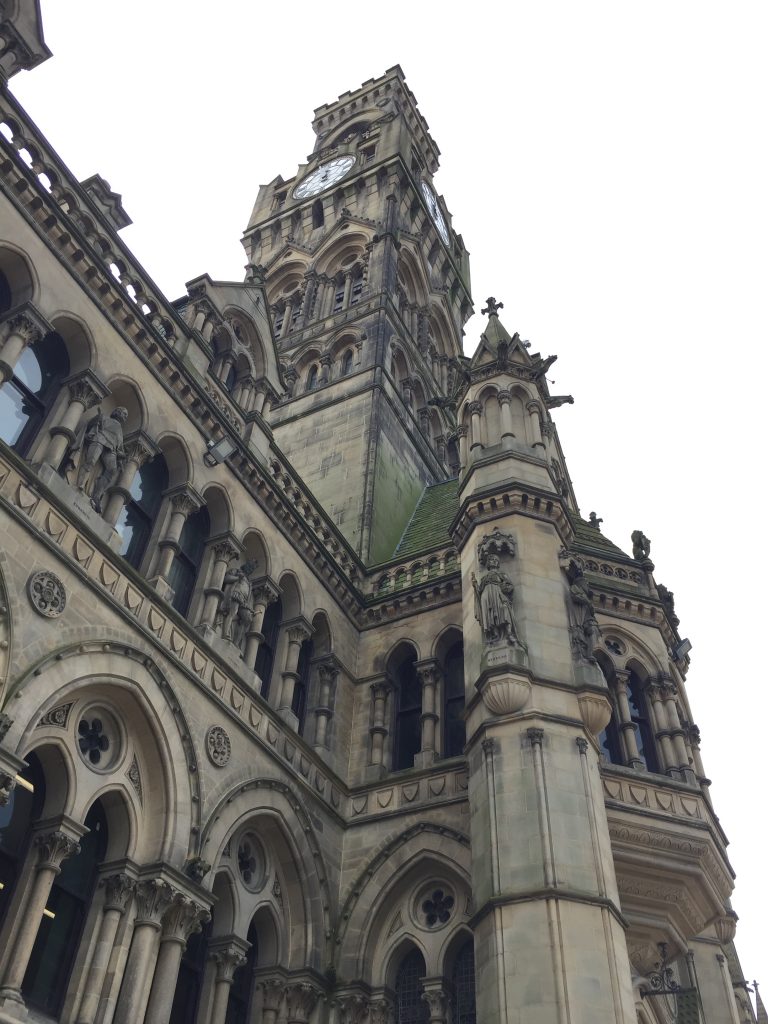



The multicultural gem – update: June 1st – Bradford was chosen!!!!
In 2016 when I’d stayed in England for the summer I’d joined a group of crafters in Bradford Cathedral engaged in a huge project to sew a long kneeler that would front the high altar. I’d gone back to the group in 2018 after I’d moved back to live in England and they were still working on the piece. I was eager to discover it it had been finished and whether it was now in use for its designed purpose.

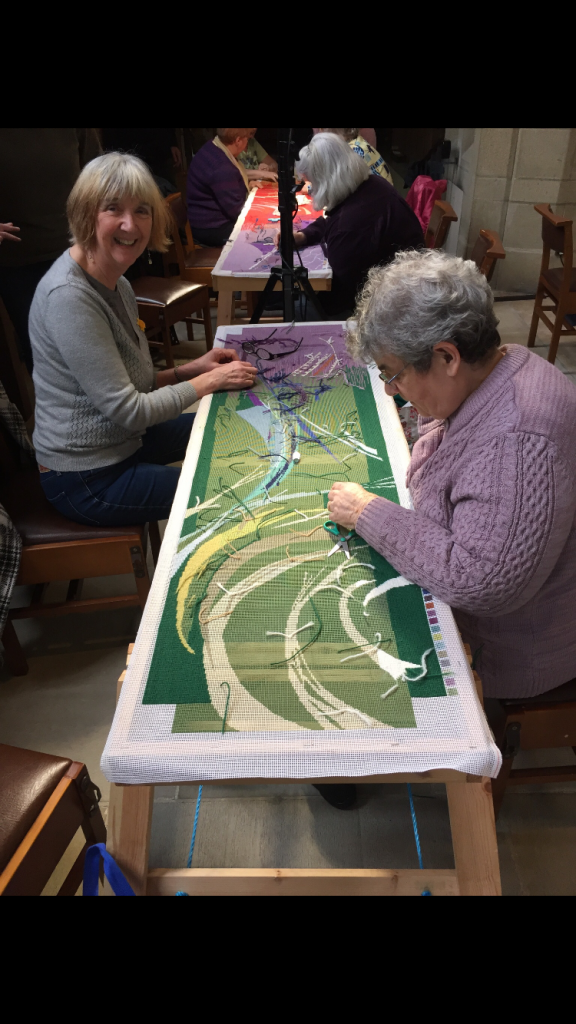

Me at work on the tapestry in 2016 and 2018
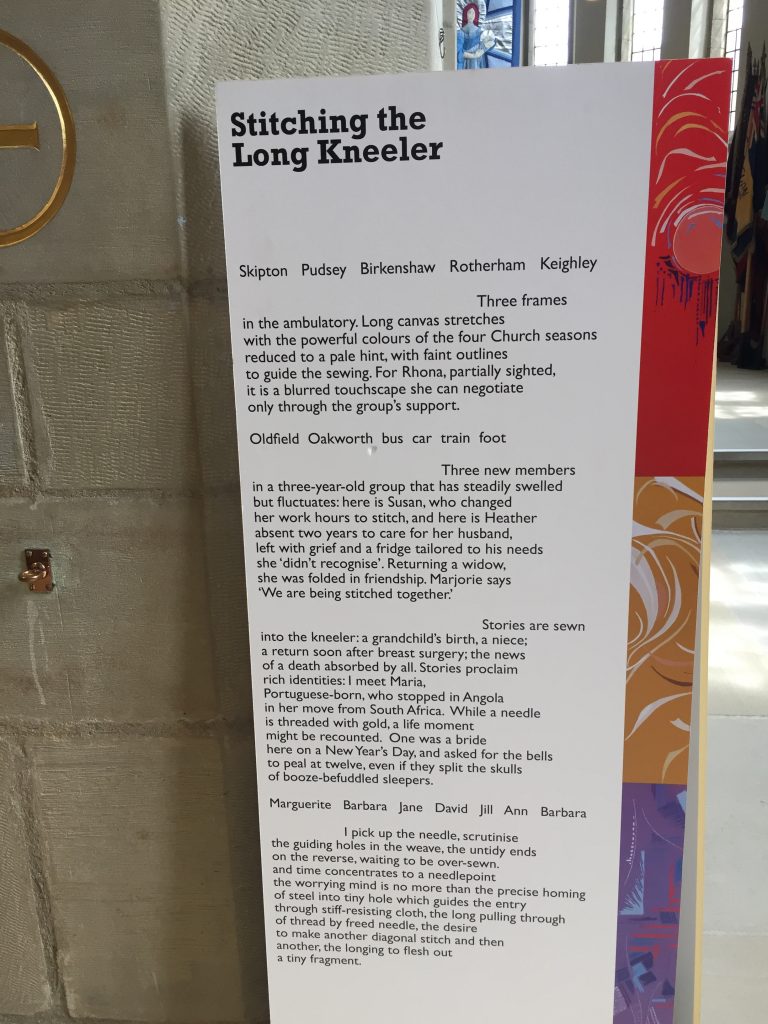
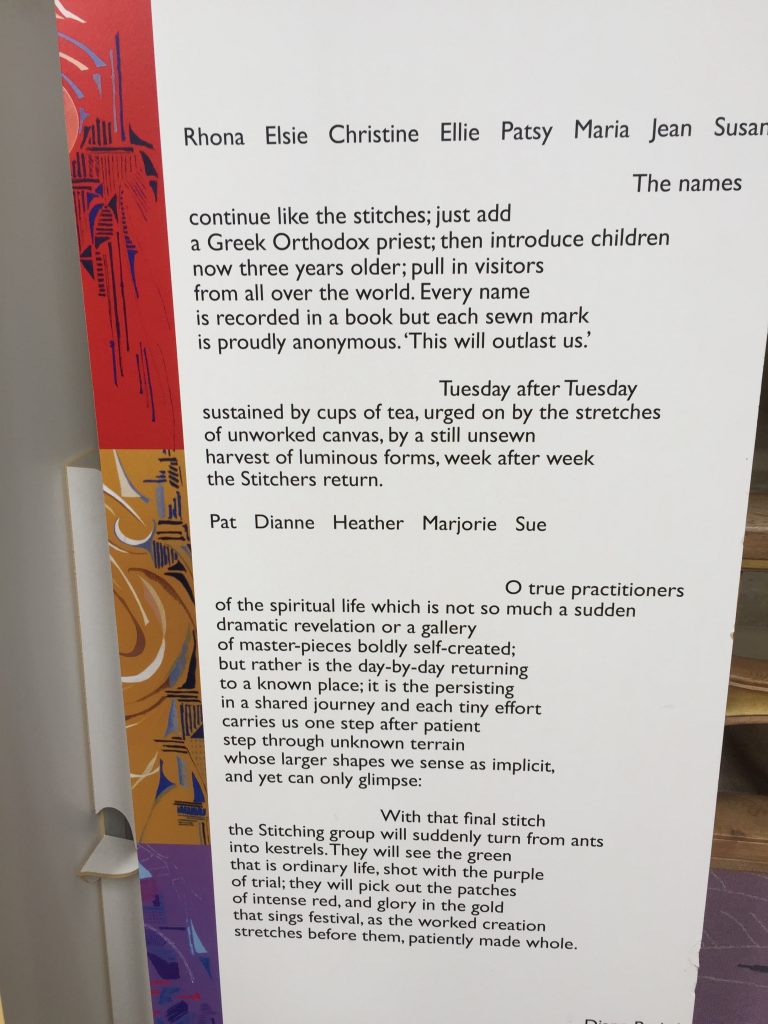
I was surprised to see my name on the sign – along with another Heather
Then to the organ recital and a wonderful buffet lunch to be nibbled in time with the music! These lunchtime organ recitals, both in Halifax minster and here in Bradford are renowned for their lunches.
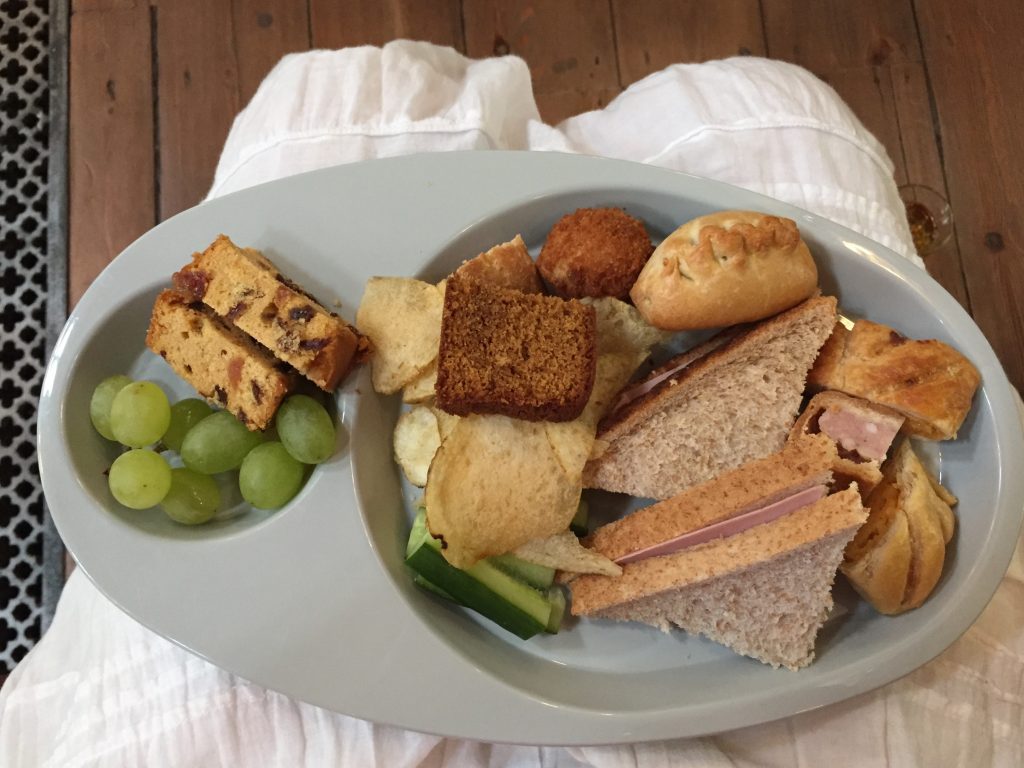
Leaving the cathedral I headed back into the centre of town to find the bus stop to take me to somewhere new to me. At the bus stop were 3 teenage boys and a girl yelling loudly to passing motorists, jeering at passers by and generally making a nuisance of themselves. They looked me up and down. I felt they were trying to intimidate me. “Hello. Do you know which bus goes to Cartwright Hall?” I asked. They froze. I wish I could have taken a photo at that moment. They seemed so taken aback that I had spoken to them. The girl offered a bus number to me and then one of the boys said, “Hey. This girl is younger than me and she keeps making fun of me.” Giggles all round. “I’m not from round here” he continued. “I grew up in Leeds.” “And this one here” he continued, pointing at his friend, “he grew up in Pakistan.” “Oh, where abouts in Pakistan? I’ve only ever been to Karachi” I replied. They all stopped in their tracks. “Really? You’ve been to Pakistan?” he replied with a definite degree of incredulity in his voice. Determined not to be outdone by his friend in embarrassing me, he continued “And this one here, he’s been in prison!” He paused for effect. “I used to teach in a prison” I answered. Again I wished I had a photograph of their faces. Total incredulity!
And then onto Cartwright Hall. Until someone I knew had recently visited this place I’d never heard of it, and talking to other local people it isn’t well known by the people of Calderdale, even though its only 11 miles from Hebden. It’s an art gallery but until I read the exhibits I presumed it had been the stately home of a wealthy mill owner.

I approached through the formal gardens sporting fountains below which was a boating lake and pavilion.

A sign informed me that the gardens have been modelled on the Mughal gardens of the Shalimar Gardens in Kashmir, Northern India, and the Taj Mahal, and Pakistan. I wonder if my friend from the bus stop had ever visited one of them. I’m fortunate to have visited both these amazing gardens.

My photo of the Taj Mahal 
My photo of the Shalimar garden in Kashmir

Having paid my entrance fee – precisely zero – I entered an amazing building with a grand staircase, marble columns, arched windows. Before me were intricate costumes of the Bradford Mela carnival, celebrating the Caribbean culture in the city.

There’s a room devoted to local lad David Hockney including one of his famous swimming pool paintings, a Warhol Marilyn, and a Lowry industrial landscape.
A work by Hockney caught my attention – a piece depicting his mother on a trip to Bolton Abbey, one of his mum’s favourite day’s out, as it was my mum’s. His parents met there. I noticed that he included his own feet in the foreground, something I often do in my photos to show my own presence in the image.
It was time for some refreshment. I’d seen the vast courtyard from an upstairs window. It had just one table in it – occupied, but by the time I got down the stairs it was empty, so I had the courtyard all to myself.


The wool combing machine was invented by Edmund Cartwright, the inventor of the power loom, in Doncaster. It was patented in 1790. This machine was used to arrange and lay parallel by length the fibers of wool, prior to further treatment. The machine was important in the mechanization of the textile industry. Samuel Lister was an English inventor whose contributions included a wool-combing machine that helped to lower the price of clothing and a silk-combing machine that utilized silk waste. In 1838 Samuel and his brother John opened a worsted mill in Manningham. He had worked on a machine to comb wool so that the long hairs would be separated from the short, thus allowing their use for different kinds of textiles, and eventually he evolved a successful machine from an earlier, inefficient device built by another inventor. Its success contributed greatly to the development of Australian sheep farming. In time he had nine combing mills operating at once—five in England one in Germany, and three in France. He provided the land and the money to build the art gallery and museum for the people of Bradford and named it after the inventor, Cartwright, whose invention had enabled him to make his fortune.
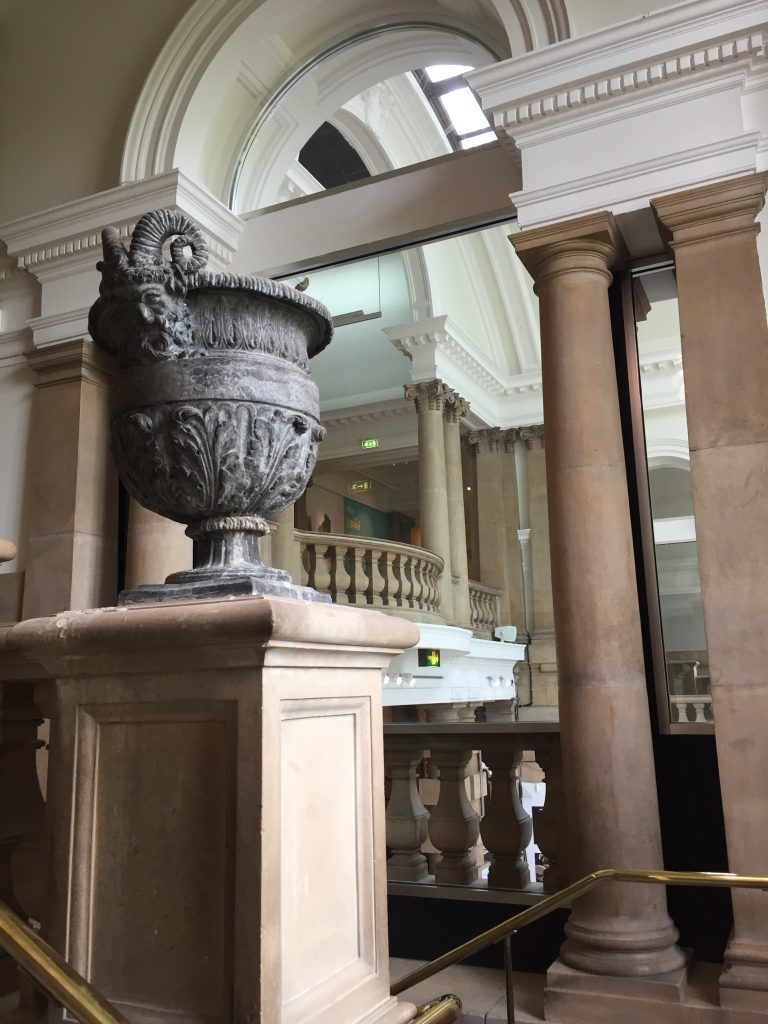
Update: Precisely one week after ‘discovering’ Cartwright Hall I attended an illustrated talk by historian David Glover in the Square Chapel. He showed old photos of Halifax and one of the photos on screen was a still from a movie: Room at the Top, a 1959 film shot mostly in Halifax but some scenes were filmed in Bradford. in fact, the ball scene had been filmed in – yes, you’ve guessed it – Cartwright Hall!
Further update: The next week I found out that Ed Sheeran’s dad was a curator at Cartwright Hall when the family lived in Hebden Bridge.




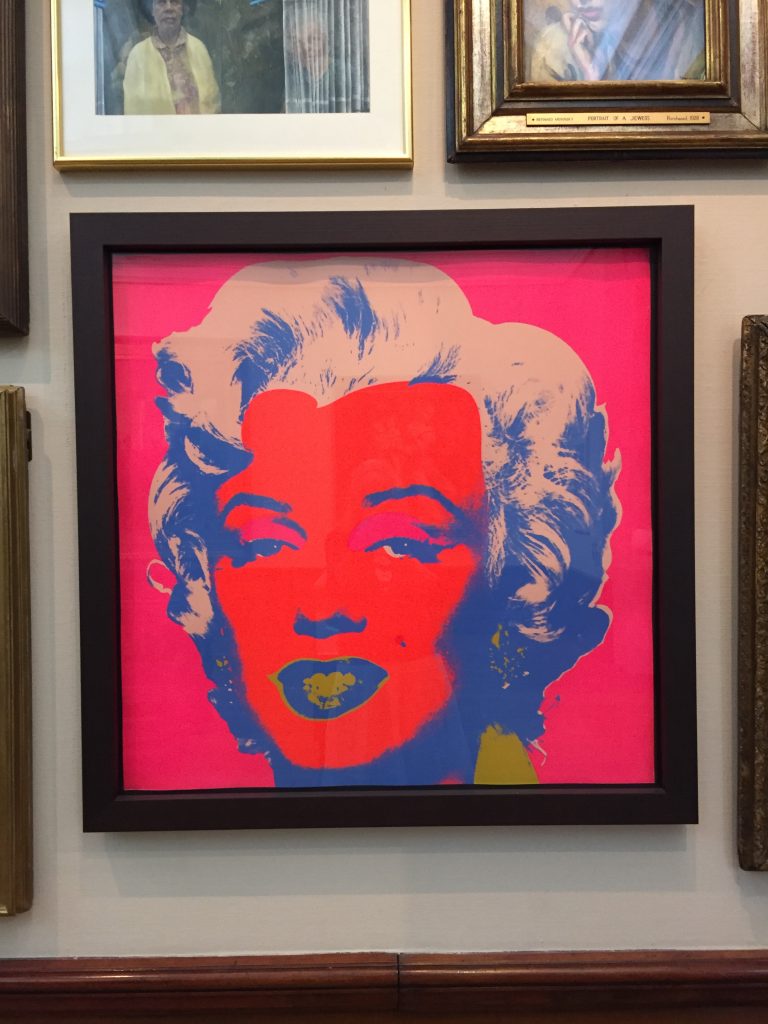


Leave a Reply